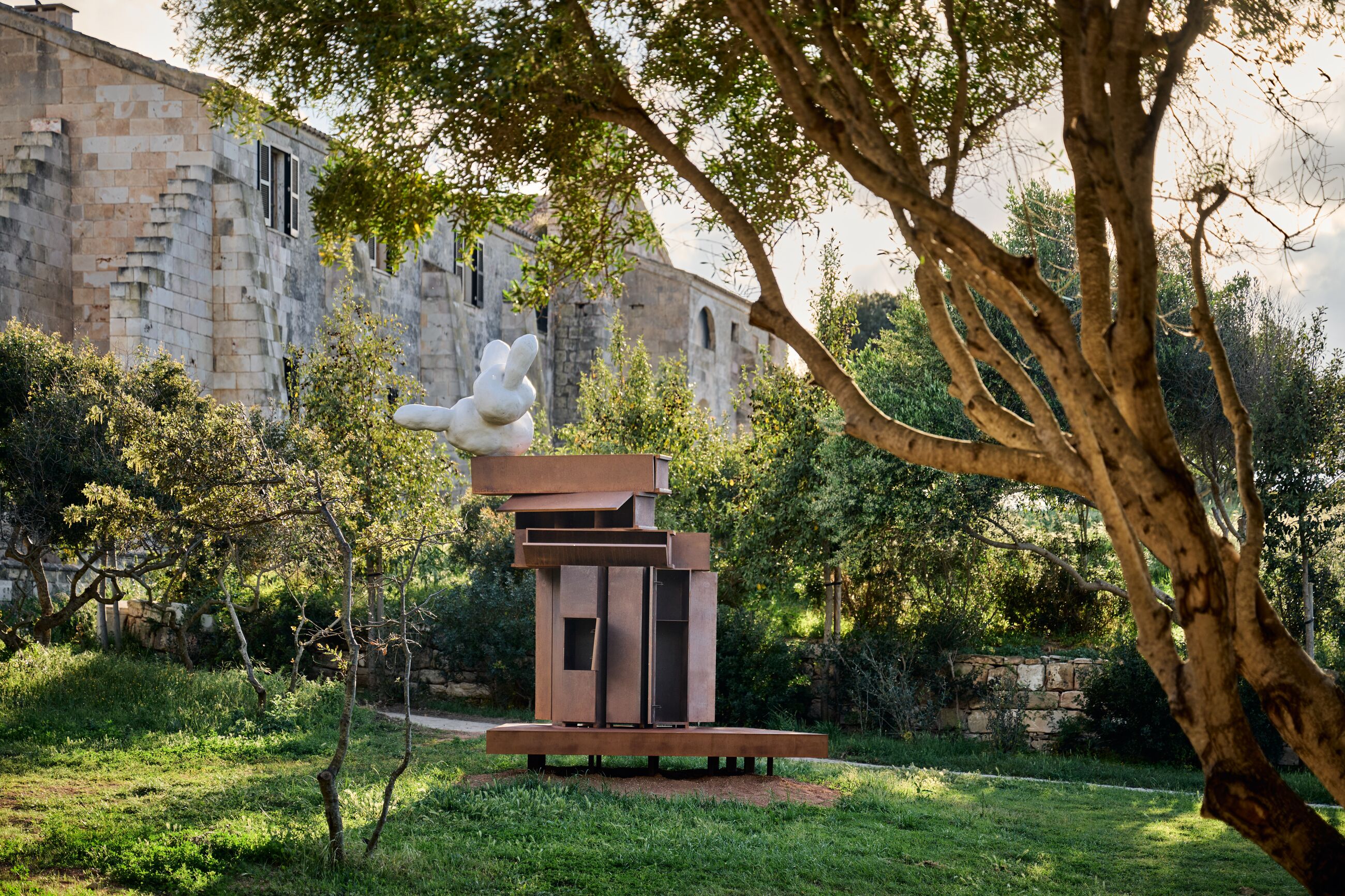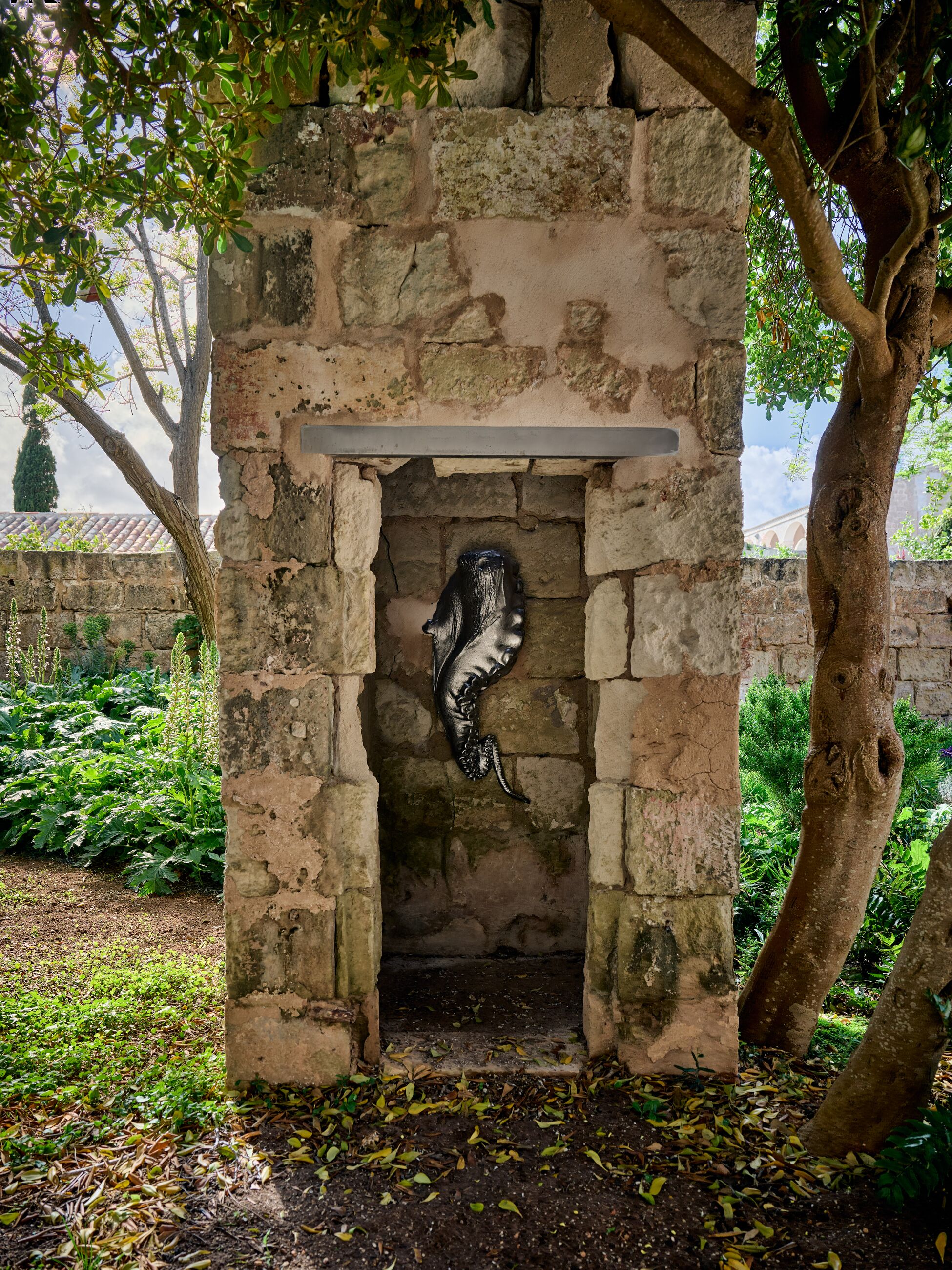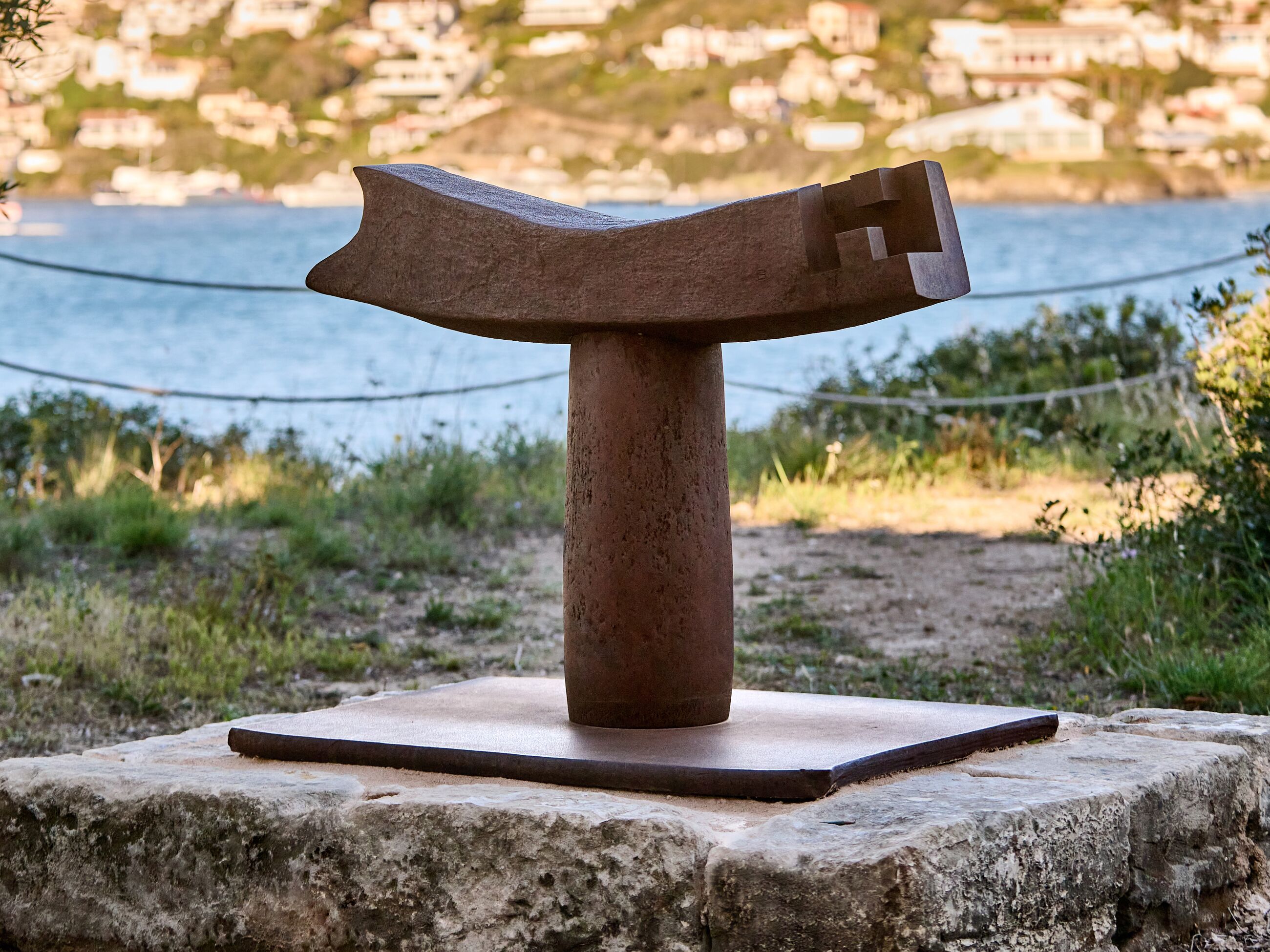New Works in Menorca’s Outdoor Sculpture Trail

Phyllida Barlow, PRANK: jape; 2022/23’, 2022 – 2023, Hauser & Wirth Menorca, 2025 © Phyllida Barlow Estate. Photo: Daniel Schäfer
New Works in Menorca’s Outdoor Sculpture Trail
In the midst of Piet Oudolf’s perennial garden is the painted bronze sculpture, ‘Untitled (Crow 2)’ (2023), by Los Angeles-based artist Gary Simmons. Since the late 1980s, Simmons has drawn from icons and stereotypes of American popular culture to create works that explore the politics of race and class. The crow alludes to multiple references, including Jim Crow laws in the Southern United States, Alfred Hitchcock’s film ‘The Birds,’ and the heckling crow characters rooted in minstrelsy from Disney’s animated feature, ‘Dumbo’. Using bronze for the first time on a large scale, the forms in Simmons’ sculpture remain unrefined, as if still in the process of being modelled and defined.

Gary Simmons, Untitled (Crow 2), 2023, Hauser & Wirth Menorca © Gary Simmons. Photo: Daniel Schäfer

David Zink Yi, Untitled, 2015, Hauser & Wirth Menorca © David Zink Yi. Photo: Daniel Schäfer
The sculpture ‘Untitled’ by Peruvian artist David Zink Yi is showcased at the Sand Stone Water Tower. Crafted from stainless steel, it depicts a single octopus arm—a recurring motif in Zink Yi’s work. Drawing inspiration from mollusks and cephalopods, such as octopuses and squids, his practice explores the intersection of biology, mythology, and philosophy.
Zink Yi engages with these creatures not only for their rich presence in historical and cultural narratives but also for their significance in neurobiology, as octopuses are among the most studied species in the field. Their evolutionary divergence from humans—dating back roughly 600 million years—creates a striking sense of ‘the other,’ underscored by their radically different form and intelligence. By isolating a single limb, Zink Yi’s sculpture moves fluidly between figuration and abstraction, capturing both the alien and organic qualities of these enigmatic beings. Beyond its conceptual depth, Untitled carries a deeply personal resonance for the artist, evoking memories of his childhood and youth on the Pacific coast of Peru. This emotional undercurrent, combined with the work’s scientific and philosophical dimensions, makes it a compelling meditation on nature, time, and human perception.
In the olive-tree forest by the sea sits Phyllida Barlow’s ‘PRANK: jape; 2022/23’ (2022 – 2023). The work forms part of a series of seven sculptures Barlow made for New York’s City Hall Park in 2023 and marked an important step with robust outdoor materials before her untimely death in March 2023. Barlow based each steel and fiberglass sculpture on a familiar object that might be found at home or in an artist’s studio, returning to several longstanding themes and motifs within her career. The objects have been rotated, repeated, and stacked to create awkward, improbable structures. An oddly irregular white form first used by the artist in the early 1990s, known as ‘rabbit ears,’ appears on each angular steel assemblage, balancing atop eccentric structures as if performing. The title of each sculpture is a single evocative word: antic, hoax, jape, jinx, mimic, stunt, and truant. Together, they suggest an interest in the creative potential of disruption and rule breaking, a hallmark of Barlow’s art.

Eduardo Chillida, Saludo a los pájaros II (Salute to the Birds II), 2000, Hauser & Wirth Menorca © Zabalaga Leku, San Sebastián, VEGAP, 2025. Photo: Daniel Schäfer
Finally, the delicate corten steel ‘Saludo a los pájaros II (Salute to the Birds II)’ (2000) by Eduardo Chillida stands outside the large window at the end of the North Galleries, surrounded by trees and views of the harbor. Appearing almost weightless, the sculpture denotes Chillida’s mastery of material and form as well as his continuous passion for natural phenomena. The work is a continuation of the 2024 solo exhibition ‘Chillida in Menorca’ and an ongoing special presentation of works within the North Galleries for the current season.
Related News
1 / 5




